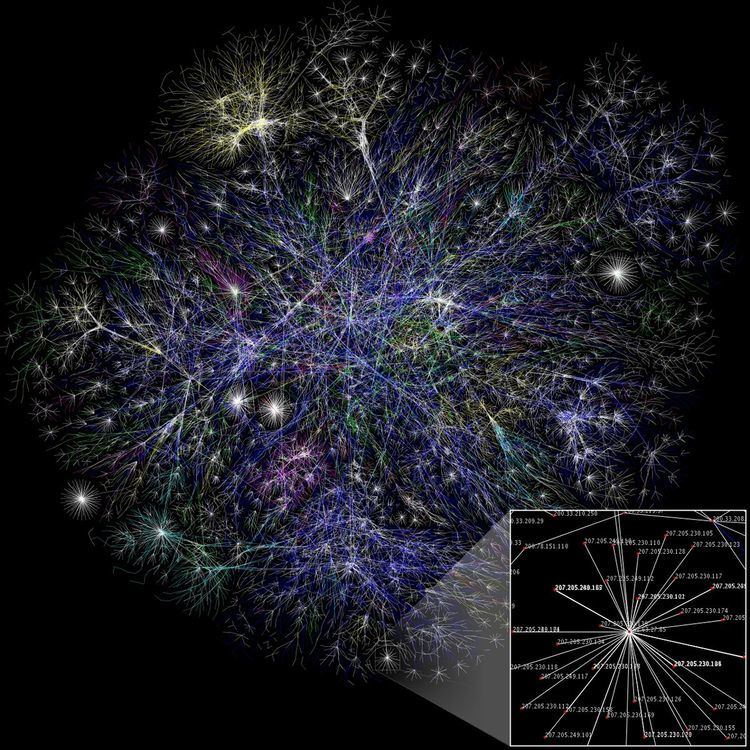 | ||
Rl grime what so not and skrillex waiting
A time-varying network, also known as a temporal network, is a network whose links are active only at certain points in time. Each link carries information on when it is active, along with other possible characteristics such as a weight. Time-varying networks are of particular relevance to spreading processes, like the spread of information and disease, since each link is a contact opportunity and the time ordering of contacts is included.
Contents
- Rl grime what so not and skrillex waiting
- Time varying network top 11 facts
- Applicability
- Representations
- Properties
- Time respecting paths
- Reachability
- Latency
- Centrality measures
- Temporal patterns
- Dynamics
- Burstiness
- References
Examples of time-varying networks include communication networks where each link is relatively short or instantaneous, such as phone calls or e-mails. Information spreads over both networks, and some computer viruses spread over the second. Networks of physical proximity, encoding who encounters whom and when, can be represented as time-varying networks. Some diseases, such as airborne pathogens, spread through physical proximity. Real-world data on time resolved physical proximity networks has been used to improve epidemic modeling. Neural networks and brain networks can be represented as time-varying networks since the activation of neurons are time-correlated.
Time-varying networks are characterized by intermittent activation at the scale of individual links. This is in contrast to various models of network evolution, which may include an overall time dependence at the scale of the network as a whole.
Time varying network top 11 facts
Applicability
Time-varying networks are inherently dynamic, and used for modeling spreading processes on networks. Whether using time-varying networks will be worth the added complexity depends on the relative time scales in question. Time-varying networks are most useful in describing systems where the spreading process on a network and the network itself evolve at similar timescales.
Let the characteristic timescale for the evolution of the network be
The flow of data over the internet is an example for the first case, where the network changes very little in the fraction of a second it takes for a network packet to traverse it. The spread of sexually transmitted diseases is an example of the second, where the prevalence of the disease spreads in direct correlation to the rate of evolution of the sexual contact network itself. Behavioral contagion is an example of the third case, where behaviors spread through a population over the combined network of many day-to-day social interactions.
Representations
There are three common representations for time-varying network data.
Properties
The measures used to characterize static networks are not immediately transferable to time-varying networks. See Path, Connectedness, Distance, Centrality. However, these network concepts have been adapted to apply to time-varying networks.
Time respecting paths
Time respecting paths refers to the sequences of links that can be traversed in a time-varying network under the constraint that the next link to be traversed is activated at some point after the current one. Like in a directed graph, a path from
Reachability
While analogous to connectedness in static networks, reachability is a time-varying property best defined for each node in the network. The set of influence of a node
Connectedness of an entire network is less conclusively defined, although some have been proposed. A component may be defined as strongly connected if there is a directed time respecting path connecting all nodes in the component in both directions. A component may be defined as weakly connected if there is an undirected time respecting path connecting all nodes in the component in both directions. Also, a component may be defined as transitively connected if transitivity holds for the subset of nodes in that component.
Latency
Also called temporal distance, latency is the time-varying equivalent to distance. In a time-varying network any time respecting path has a duration, namely the time it takes to follow that path. The fastest such path between two nodes is the latency, note that it is also dependent on the start time. The latency from node
Centrality measures
Measuring centrality on time-varying networks involves a straightforward replacement of distance with latency. For discussions of the centrality measures on a static network see Centrality.
Temporal patterns
Time-varying network allow for analysis of explicit time dependent properties of the network. It is possible to extract recurring and persistent patterns of contact from time-varying data in many ways. This is an area of ongoing research.
Dynamics
Time-varying networks allow for the analysis of an entirely new dimension of dynamic processes on networks. In cases where the time scales of evolution of the network and the process are similar, the temporal structure of time-varying networks has a dramatic impact on the spread of the process over the network.
Burstiness
The time between two consecutive events, for an individual node or link, is called the inter-event time. The distribution of inter-event times of a growing number of important, real-world, time-varying networks have been found to be bursty, meaning inter-event times are very heterogeneous – they have a heavy-tailed distribution. This translates to a pattern of activation where activity comes in bursts separated by longer stretches of inactivity.
Burstiness of inter-event times dramatically slows spreading processes on networks. Since many real-world networks exhibit burstiness this has implications for the spread of disease, computer viruses, information, and ideas.
Burstiness as an empirical quantity can be calculated for any sequence of inter-event times,
Burstiness varies from −1 to 1. B = 1 indicates a maximally bursty sequence, B = 0 indicates a Poisson distribution, and B = −1 indicates a periodic sequence.
